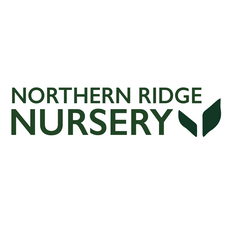Why Fall Is the Best Time to Plant Trees
Published by: Northern Ridge Nursery
Updated: June 2025
When you think of planting trees, your mind probably jumps to spring. But what if we told you that fall is actually the best time to plant? Whether you're starting a home orchard, adding native species to your landscape, or planning for pollinators and wildlife, fall offers a unique window of opportunity for giving your trees a head start on success.
In this guide, we’ll explore the science and strategy behind fall planting, share expert tips, and explain how to match your tree choices to your USDA Plant Hardiness Zone. By the end, you’ll be ready to make informed, zone-appropriate decisions that lead to stronger trees, better yields, and less maintenance.
🌱 1. Trees Prioritize Root Growth in Fall
During the fall months, deciduous trees begin entering dormancy above ground. This doesn't mean the tree is “asleep”—instead, it's redirecting energy to its root system. This is great news for fall planters. When you plant in autumn, your trees can begin establishing their roots immediately without being taxed by leaf, flower, or fruit production.
The key ingredient here is soil temperature. While the air may feel chilly, the ground retains warmth far longer. Roots will continue growing until the soil drops below about 40°F, which means fall-planted trees have weeks (even months in milder zones) to settle in and prepare for spring.
Compared to a spring-planted tree that must juggle new root development with leaf-out and water loss, a fall-planted tree has a clear advantage going into its first growing season.
🌡️ 2. Cool Weather Minimizes Transplant Stress
Anyone who’s ever planted in midsummer knows it can be brutal—for both you and the tree. High heat and sun exposure increase the risk of transplant shock, stress-induced leaf drop, and root dehydration.
By contrast, fall planting offers:
- Cooler daytime temps that reduce heat stress
- Higher humidity and autumn rains that improve soil moisture
- Less evaporation and fewer watering demands
- No competition from weeds or fast-growing grasses
This “sweet spot” between summer’s heat and winter’s freeze creates an optimal environment for tree establishment.
🐛 3. Fewer Insects and Disease Risks
Spring and summer are prime time for pests, including aphids, beetles, leafhoppers, and fungal infections. These threats can quickly overwhelm a freshly planted tree that’s already vulnerable due to transplant shock.
In fall, most insect populations decline dramatically. Soil pathogens slow down. Weeds lose vigor. This gives your tree the breathing room it needs to settle in and grow unbothered. That also means you’ll spend less time treating problems and more time watching your tree thrive.
🌎 4. Shipped According to Your USDA Zone
One reason many gardeners hesitate to plant in fall is uncertainty about timing. That’s why at Northern Ridge Nursery, we take the guesswork out of the equation by shipping according to your USDA Hardiness Zone.
This means your order arrives when your local soil conditions are ideal for planting—usually between November and February, depending on your location.
Fall shipping ensures your plants are dormant, easy to handle, and ready to root—without risk of leaf burn or heat stress.
🌳 Top Bare Root Trees and Shrubs to Plant in Fall
Our bare root trees and shrubs are dormant when shipped, allowing for easy handling, lower shipping costs, and rapid root establishment. Here are some of our top picks for fall planting:
- Zone 3–5: American Elderberry – ideal for wildlife, hardy and native
- Zone 4–7: Wild Plum – beautiful spring blooms and edible fruit
- Zone 5–8: American Persimmon – cold-hardy with sweet orange fruit
- Zone 4–7: Aronia (Chokeberry) – antioxidant-rich berries and fall color
- Zone 4–8: Carolina Allspice – fragrant flowers and deer-resistant
- Zone 3–6: Sugar Maple – classic fall foliage and strong root establishment
📅 Why Pre-Ordering Early Matters
Unlike spring planting, which has a wider time window, fall planting depends on catching the ground before it freezes. As a result, fall inventory moves quickly—and many customers are left waiting until next year.
By pre-ordering early, you get:
- Guaranteed inventory of our most popular trees and shrubs
- Priority shipping based on your USDA Zone
- Peace of mind knowing your trees are scheduled for timely delivery
❓ Frequently Asked Questions
Can I plant after the first frost?
Yes! In fact, frost helps trigger dormancy in many species. As long as the ground isn't frozen solid, planting after frost is not only safe—it’s ideal for root establishment.
Should I mulch fall-planted trees?
Definitely. Mulch helps insulate the soil, retain moisture, and regulate temperature swings. Apply 2–3 inches around the base, but avoid piling it against the trunk.
How do I know when it’s too late to plant?
If your ground is frozen or snow-covered, you’ve likely missed the window. In Zones 3–5, that usually happens by mid- to late November. In Zones 6–8, planting may continue through January.
Do bare root trees need to be soaked before planting?
Yes. We recommend soaking bare root trees in water for 2–12 hours before planting to rehydrate the roots and improve transplant success.
How should I water trees planted in fall?
Water deeply at planting, and then monitor every few days until the ground freezes. Fall rains usually reduce the need for frequent watering, but soil should never dry out completely.










